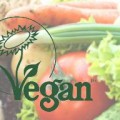The planet was in trouble, our lifestyle – unsustainable, our climate – changing. Solutions were needed. And when it came to food people started looking for the local option. For a sustainable future it seemed that the locavore or 100-Mile Diet were the best options for ensuring that the future generations, the food supply and the current population could all survive. Now supposing the terms locavore and 100-Mile Diet are not yet part of your vocabulary a recap is in order. Both are diets that rely on foods produced locally. For the 100-Mile Diet specifically, you’re given a 100-mile radius in which to find all foodstuffs you need. This ensures that you’re getting preservative and chemical free food that is in season and often organic. It also lessens your carbon footprint as the food has fewer miles to travel. The locavore movement is similar, although it was spawned in San Francisco and the 100-Mile from Vancouver.
So what we’re left with is an environmentally-friendly, economically-sound practice that provides us with a great tasting, healthy selection of foods.
And although this solved some problems, new ones were created in its place. Like when people take a good idea too far. Becoming too single-minded about the idea of buying only locally produced items can result in the bigger picture being lost. Resulting in a situation whereby sometimes the social good of importing outweighs the benefits of buying locally.
So what does this mean? Well, take the example of rice production. When grown in Bangladesh, rice crops employ thousands of people, and naturally results in a dense, long-lasting product that is ideal for transportation by ship. But were a locavore looking for the same product grown in the desert state of California, rice production here relies heavily on diverted water, chemical and equipment intensive crop growing techniques. Furthermore, the tractor plow used to harvest the rice is less energy efficient when compared to the hand or ox-plow’s used in developing countries.
Need another example, look at North American domestically grown bananas. In an unnatural climate, bananas are grown in hot houses relying on wasteful artificial energy sources as opposed to the tropically grown, natural sunshine reliant varieties.
Another problem with our current food system is these pesky environmental problems we’ve been facing. With the increase in dramatic weather patterns, including floods, hurricanes, tsunamis and other similar natural disasters, worldwide crop yield has decreased. Added to this, the food we are growing is now divided between food resources and biofuel production. Meaning even less to feed the global community with.
So again the solution for this new problem is that more farmers in developing countries will be drawn to the high price yields for their crops, they’ll grow more food and ultimately drive prices back down. Not a perfect solution however, as these same farmers will be hurt economically due to globalization and the lack of free trade. The future of food is a tricky problem where the answers aren’t clear, singular or straight forward.
But before you throw your hands up in defeat, there are still things you can do. The idea behind the locavore and the 100-Mile Diet are a sound practice and you should continue to buy locally where and when you can. When you can’t get a product locally, for example coffee, tea, rice and chocolate, look for companies or producers with a sustainable food system. Above all though you should strive to be thoughtful and mindful about where your food comes from. Educate yourself on the process taken to get food to your table.



3 Comments
Tatiana (20 comments)
March 11, 2008 at 8:07 amI know not all my food is local, but I do get all my produce through a local company who delivers in the SF bay area up to Sacramento. They sell only organic and get local products as much as possible. I am also very lucky that the area I live in is extremely rich in agriculture, including rice, nuts, a massive variety of fruits and vegetables, and more! I love hitting farmer’s markets as much as possible.
Tatiana (20 comments)
March 11, 2008 at 8:24 amI agree that this is definitely not an easy solution, there are many variables. I wanted to share an opinion. I do not agree that California is a “desert” state. California does have desert in it, but much of California is very water rich and lush. The area I live in uses water from the local area. Much of California does use diverted water, but much of that water comes from California (Northern California often provides water for Southern California). In fact, California often has to provide water to some of our neighboring desert states. I don’t mean this in any way to detract from your well written commentary, only to provide some insight on the agricultural setup in California.
xetvx (26 comments)
March 11, 2008 at 4:50 pmTatiana: I am so very impressed with your knowledge and researched facts. Thank you so much for sharing your wise information. Have you considered joining the vegan writers networking group?